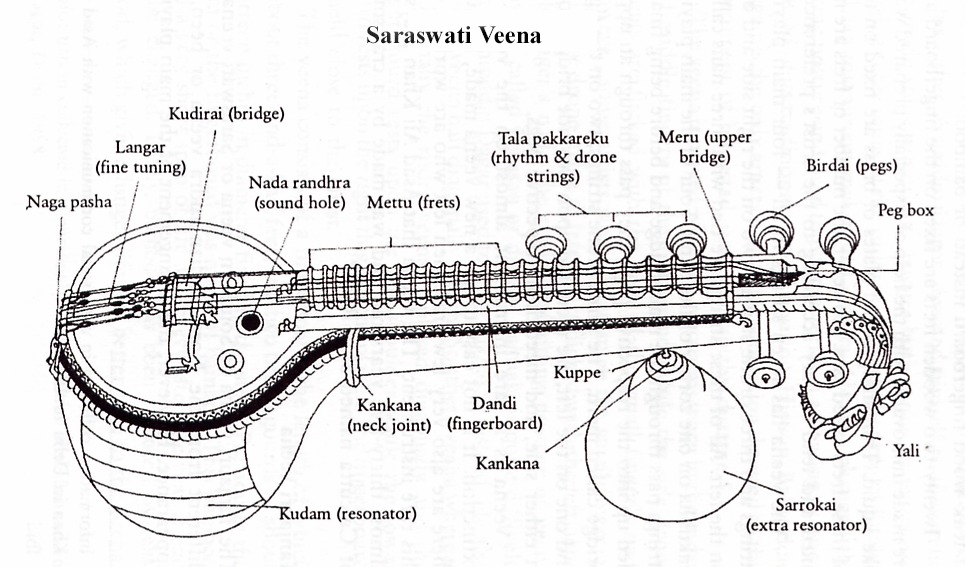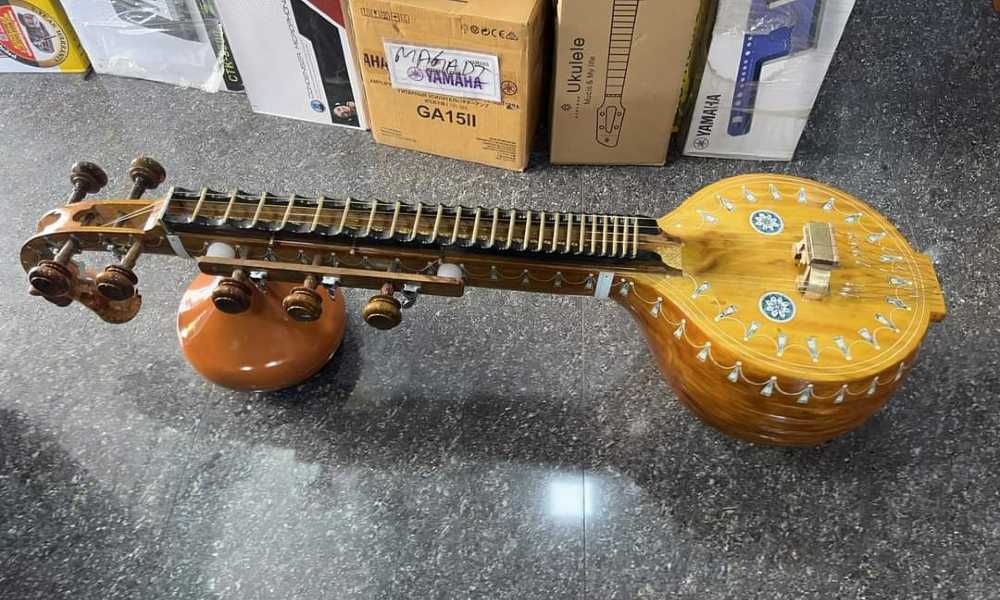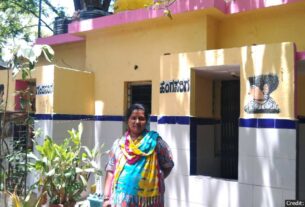Mysore-style veena is on the verge of extinction without government help.
The scarcity of skilled workers in the veena-making industry in Bangalore poses a serious threat to the future of the Mysore-veena. The Mysore style tambura, too, faces a similar fate, with no manufacturer left.
Previously many retailers like Veena Works, Aruna Musicals, and Veena Musicals, located in Balepete, Bangalore would employ veena makers on a contract or full-time basis. But now, with fewer skilled workers available, they instead place their orders with the Shimpadipura village manufacturers. In some cases, they have stopped selling the Mysore veena completely.
Raju. V of Verna Veena Works said that the demand for the Mysore veena is shrinking. Some can cover their costs by exporting their products. “We used to have a few veteran artists working as our employees around 3-4 years back. Unfortunately, the next generation in their family did not learn the craft. As a result, we now only buy Mysore veenas from Shimpadipura village; we rarely come across any that meet the mark .”He added that the production of Mysore-style Tambura has stopped completely.
Arun Kumar is an artist who comes from a family that has traditionally been involved in making veenas in Shimpadipura village, he also transports his veenas to many shops in Bangalore. He said that only around 5-6 families are left that are actively involved in manufacturing the veena, and the younger generation in those families has opted for other professions.
He also pointed out the many problems that the families face, apart from taking up the profession full time. Accessing materials used traditionally in making the Mysore veena is becoming financially unfeasible for the craftsmen. Mysore veenas are made from the trunk of the jack fruit trees. Most trees are now grown in plantations which makes it difficult for the veena manufacturers to access the wood. He also said the people involved in manufacturing veenas need to be trained for a very long period and need sustained dedication.
“Skills involved in the manufacture of the Mysore veena involve a specialized carpentry style for cutting and carving. This is followed by two months of seasoning, manufacture of frets, decoration, engraving, and coloring. The time required for this process is around 4-6 days after the seasoning of jackwood or rosewood, but the preparation to obtain the perfect material starts at least a month earlier. For tuning the veena, a keen musical sense is a must,” Arun Kumar explained.
Issac Samuel, who handles the work of Veena Musicals, said there is a serious threat to the future of the Mysore veena. If the government does not intervene, manufacturing may stop in a few years, he said.
He said “I have not come across a good Mysore veena in the last four to five years, that is why I have stopped recommending buying new Mysore Veenas to any of my customers. The only decent ones sold are the old, used ones . Nowadays people just put some carving on any wood and present it as a Mysore veena. There are no skilled workers left in the younger generation to take the craft forward.”
He instead recommended that artists buy the Thanjavur Veena that is probably Rs. 6000 to Rs. 8000 more expensive. He said that he has not come across any scheme or help for the veena makers by the government and if they don’t take conducive steps soon the Mysore veena will be history just like Mysore style Tambura.

Some distinctive features of Mysore veena that set it apart from other types of veena are the top of kudam (resonator) is thinner which brings out a different sound as opposed to Thanjavur Veena. The width of the dandi (fingerboard) widens from two inches to 2.5 inches. The tuning of strings to the birdai (peg holder) is different.The sarokkai (extra resonator) was made of tin but is now made of fiber and the nagapasha (string holder) is made of wood called ‘puchcha’.
In the Mysore veena, the first part of the bridge near the first string is made of steel and the balance is made of brass.
Dr. Girish teaches the veena among other instruments in his institute Veena Vani Music School located in Bangalore. He said “ We have been only teaching with the Thanjavur veena for almost a decade now. The Mysore veena coming out these days are useless as they are just like prop pieces without any actual work done. The sound which comes out from them is not at all on par with a Thanjavur veena.”




